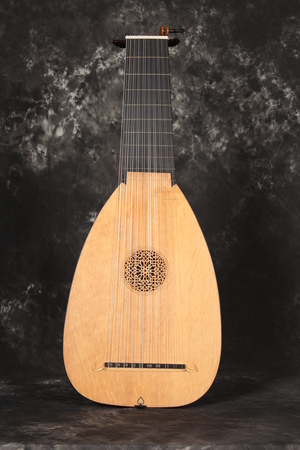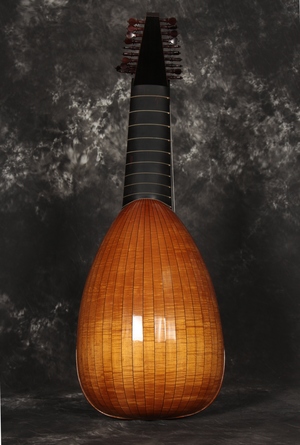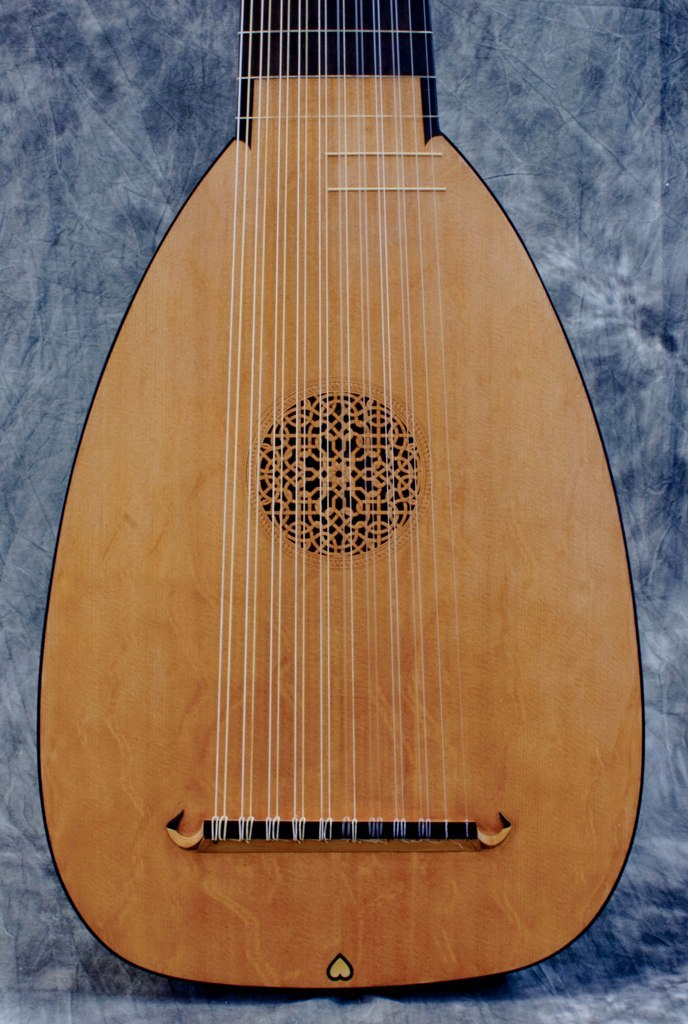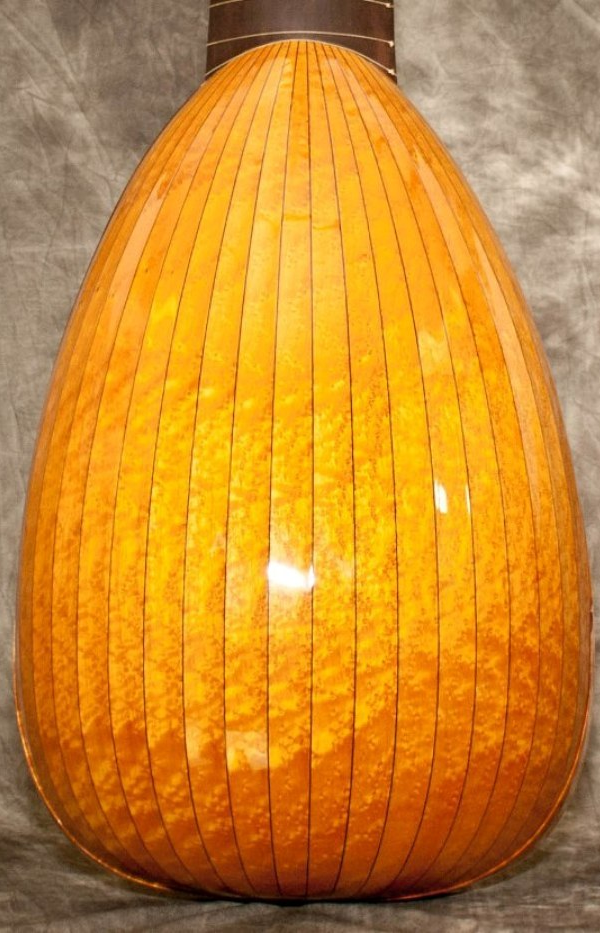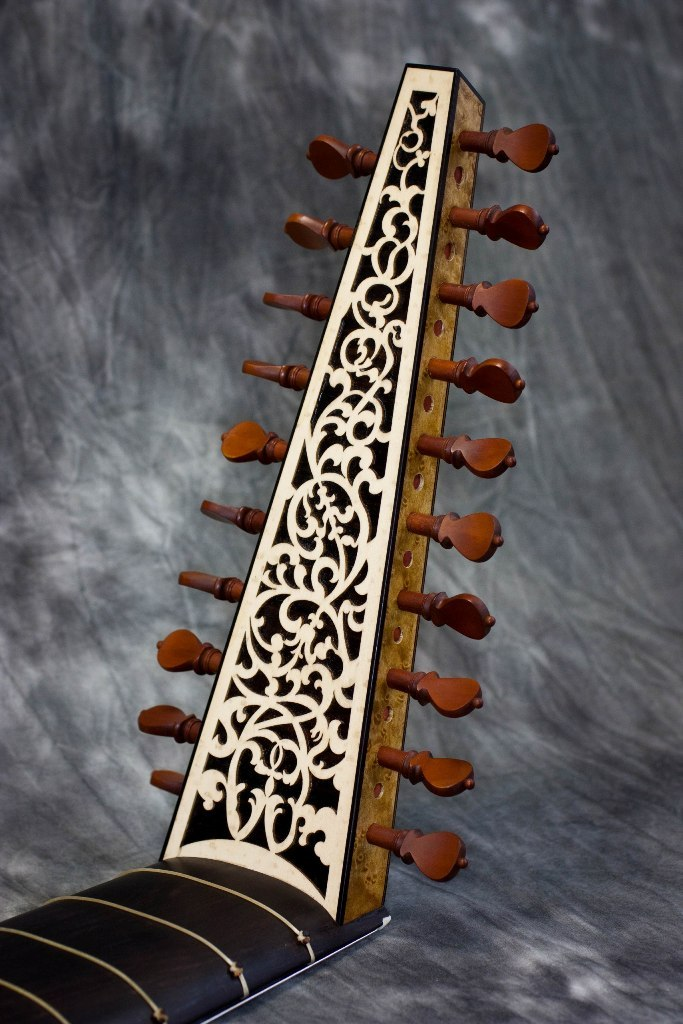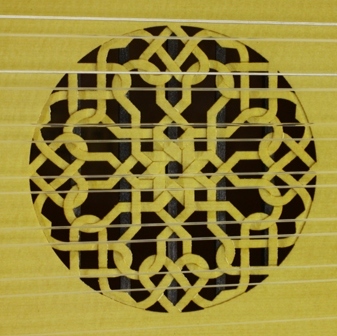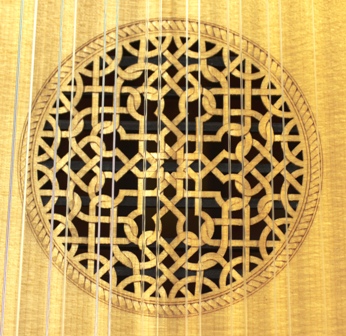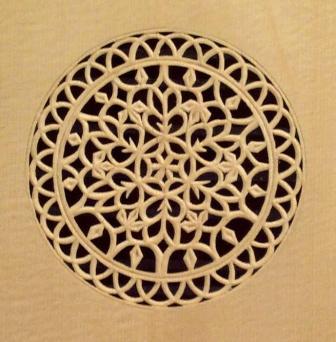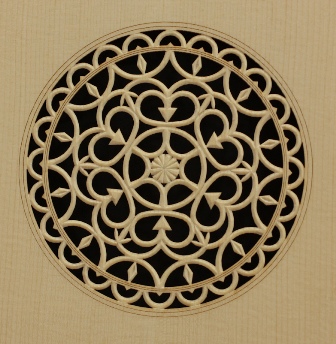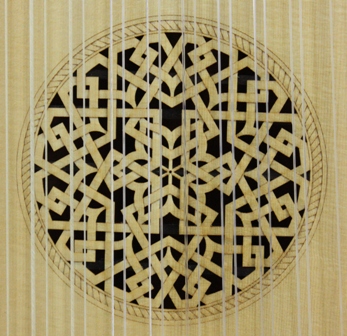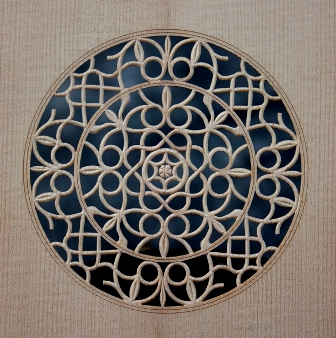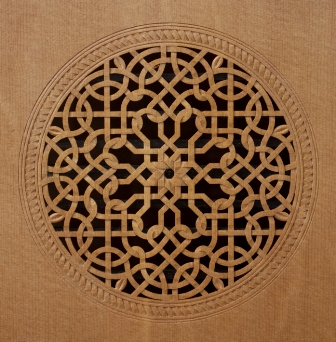This instrument is SOLD
Hans Burkholtzer 10/11-Course Model Lute
The inspiration for this lute model came from Jakob Lindberg, although he bears no responsibility for my effort.
I had an opportunity to hear a concert he gave in Boston and had a chance to talk with him afterwords when he showed me his wonderful original lute made in 1590 by Sixtus Rauwolf. Of course, the instrument has been modified over the years and I was struck with the configuration that Jakob has made to its current condition. He has arranged the bridge so that the instrument may be strung with either ten courses in a Renaissance tuning or eleven courses in a Baroque tuning. By changing the nut and rearranging the top courses on the lute, it can easily be converted back and forth between the two tunings, making this an extremely versatile instrument. I thought this was a wonderful idea and decided to offer the Burkholtzer model lute with this feature.
This 10/11-course model is made with a 68cm string length which is long enough for a powerful tone in the D minor tuning, yet short enough to be comfortable to play in the renaissance tuning. This gives a pitch for the instrument as “F” at a-415 for the Baroque lute tuning and for the Renaissance tuning the instrument can be considered to be a bass lute at the pitch of “E” at a-440.
Instrument specifications:
Back: Choice of 11 or 21 ribs, wood of choice with ebony spacers
Italian spruce front
Hand cut rose modeled on the original
Decorative carving around rose
Spruce neck core with ebony veneer
Head maple rails with ebony trim
Solid ebony head back plate (Decotarive head back plate is optional)
Ebony fingerboard, with points
Pegs: choice of ebony, rosewood, boxwood, or mechanical pegs
End button: to match the pegs
Bone nut
Maple chanterelle rider with ebony lining
Maple bass rider with ebony lining
Strings: nylon top strings and octaves with wound nylon basses
Pear bridge with ebony top plate
Ebony outlined mother of pearl heart at bottom of front
Ebony front edge half binding
The instrument comes with a choice of woods: Figured maple, Bird's-eye-maple, or Pear, all with ebony spacers.

